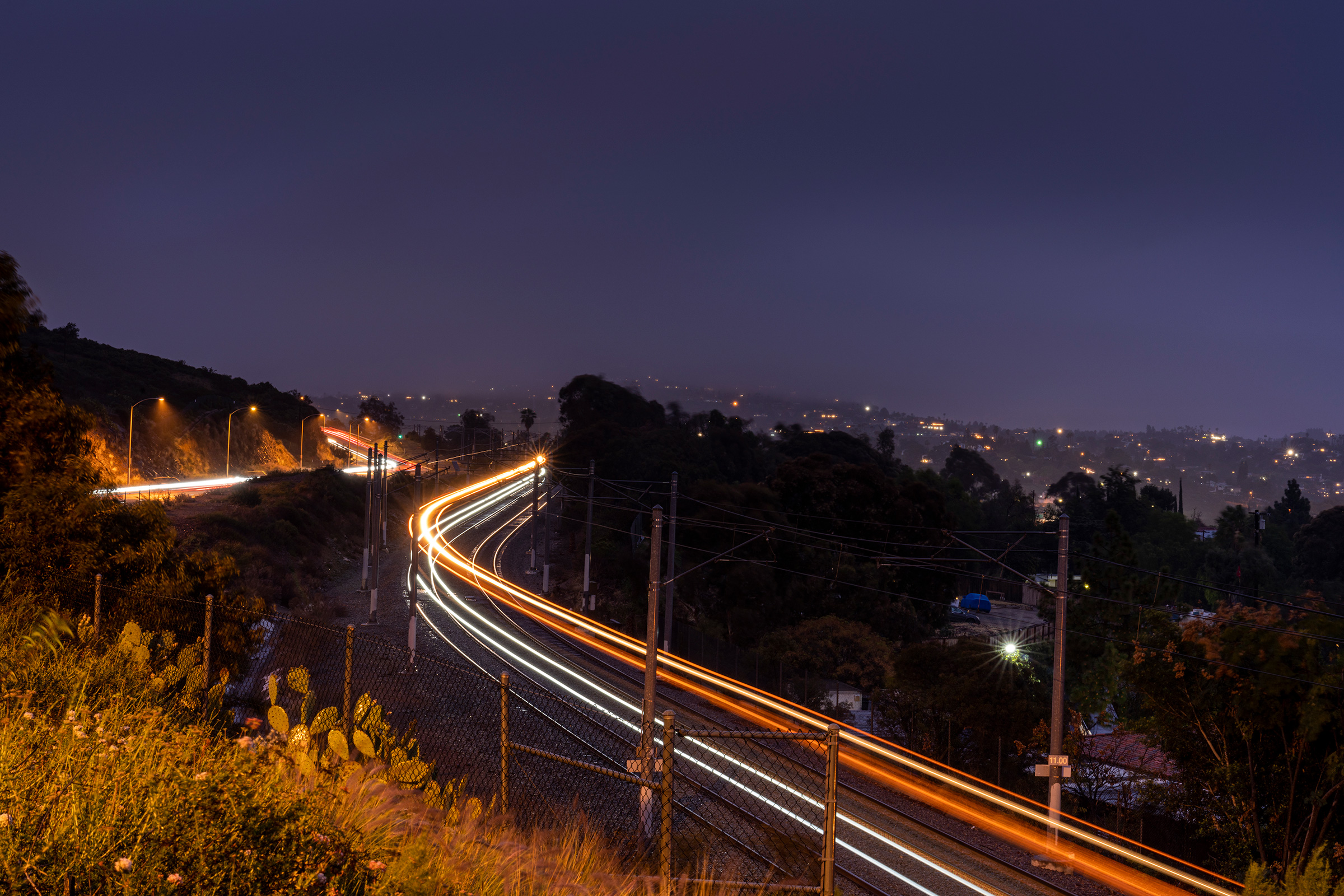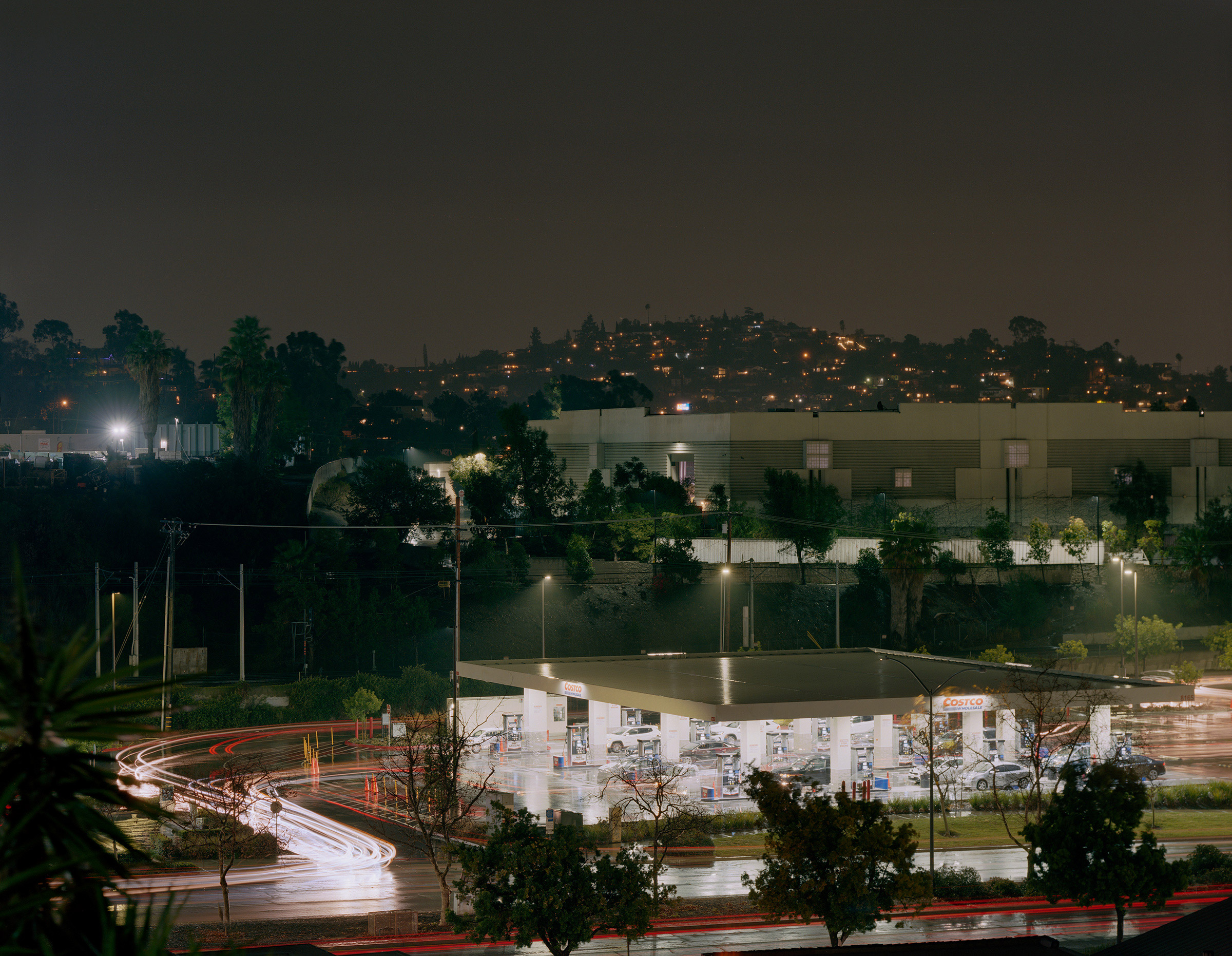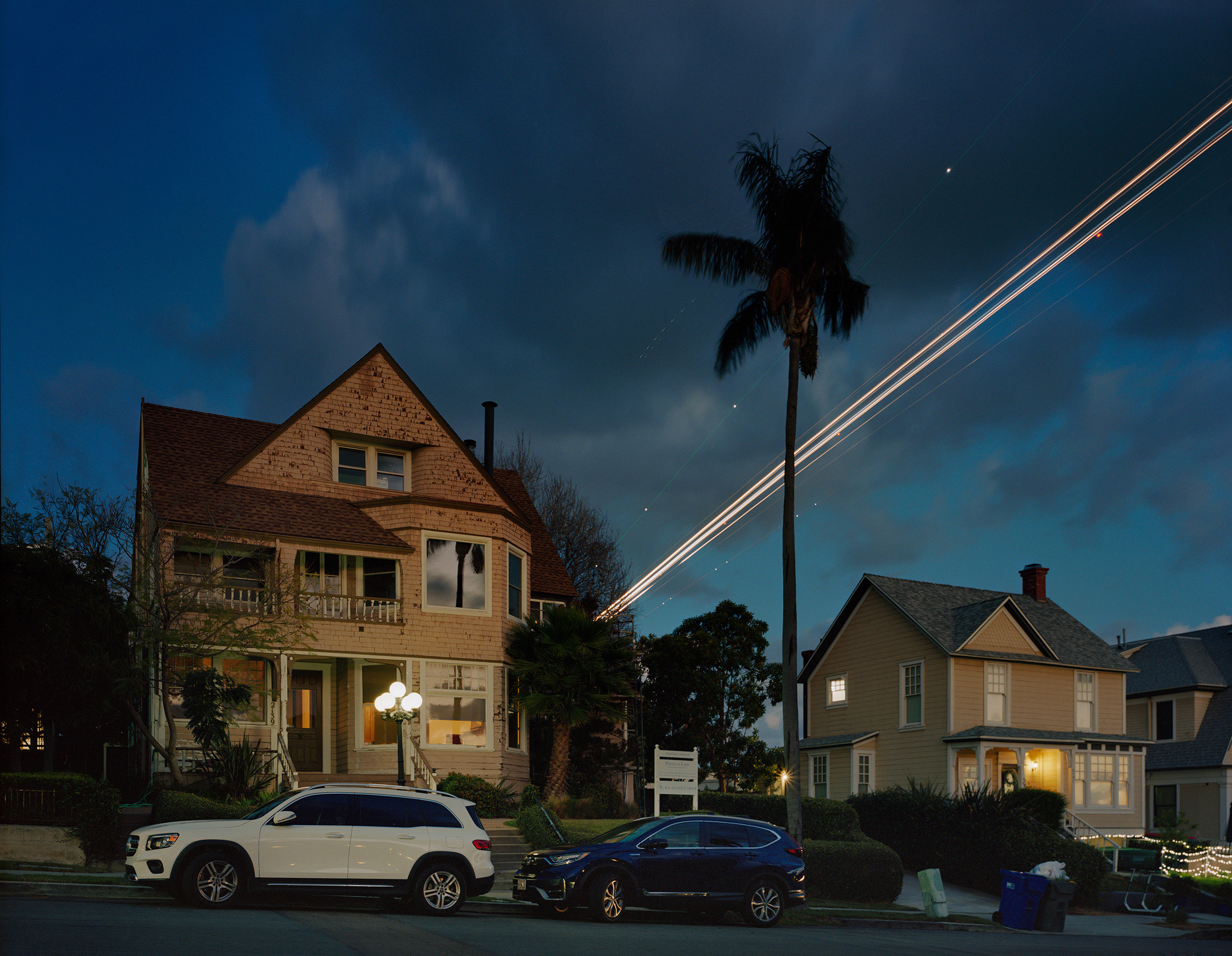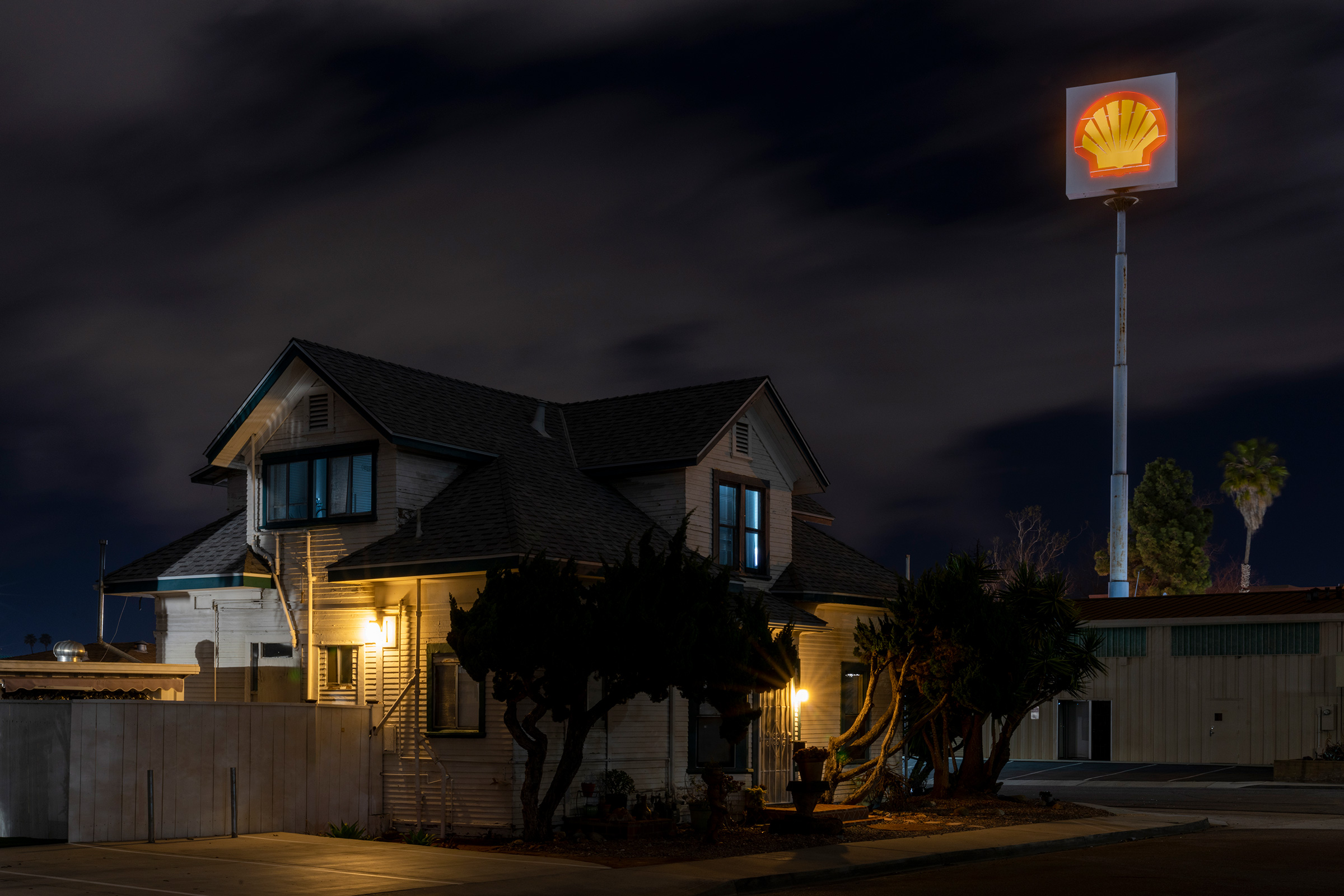The city of La Mesa seems on the surface to be as progressive as they come. Registered Democrats outnumber Republicans by a 2:1 margin—and, generally speaking, the San Diego suburb votes bright blue. The city council is working to build low-income apartments on a vacant lot downtown that until recently housed a police station, and, four years ago, it adopted a plan committed to sharp reductions in local greenhouse-gas emissions.
It’s the kind of place where someone like Laura Lothian, who is cut from the cloth of conservative cable news, might not be the most popular. In a recent conversation on the patio of her hillside home, she railed against COVID-19 shutdowns and unisex dressing rooms, and told me with delight about her “intimate” meal with “MTG”—Marjorie Taylor Greene, a U.S. Representative from Georgia known for trumpeting far-right conspiracy theories.
But it turns out Lothian is just what progressive La Mesa was looking for. In November, she clinched an unlikely electoral victory, becoming La Mesa’s newest city councillor, by focusing on a single issue: opposing a new road-usage fee, which would charge people for every mile they drive. With gas prices on the rise and inflation reaching the highest level in decades, Lothian gambled that voters would put their pocketbook concerns above their anxieties about climate change. The bet paid off. “This issue brought out everybody—and it changed things,” she says.
The road-usage fee is hardly out of left field. It’s part of a $160 billion plan to restructure San Diego County’s transportation system, spearheaded by the regional planning authority, the San Diego Association of Governments, also known as SANDAG. More than a dozen states are currently considering similar fees, according to the National Conference of State Legislatures. The idea is straightforward: by levying a small fee on miles driven, state and local governments can recoup some of the revenue lost in gas taxes, which are declining as more cars go electric, while simultaneously pushing people to use cleaner methods of getting around, like public transit or rideshares. In San Diego, revenue from the new fee would fund a slew of local, emissions-reducing projects.

At first, SANDAG’s road-usage fee, which is slated to go into effect in 2030, flew under the political radar. But last year, as energy prices crept up, San Diego Republicans embraced it as a potential political gold mine. “We made this issue the singular issue in that race,” says Carl DeMaio, a local Republican activist, referring to Lothian’s campaign. “The Mileage Tax being backed by La Mesa City Council members would charge you 4–6 cents PER MILE you drive—costing $600–900 per driver in La Mesa!” read one Lothian mailer.
Lothian’s surprise victory upended politics in San Diego County. Democrats across the region immediately began backpedaling, insisting that they no longer supported the road-usage fee, or demanding more study of it, while Republicans doubled down on the issue, making it the centerpiece of their 2022 campaigns. Thousands of locals responded to a call from a local Republican to flood the inbox of county officials. “This is kryptonite for the Democrats,” DeMaio says.
Read More: The Window to Adapt to Climate Change is ‘Rapidly Closing’
It’s not just San Diego. The political drama playing out in this sunny Southern California outpost is in many ways a microcosm of what’s happening both nationally and globally. As energy prices rise at the same time that many governments are finally getting serious about climate change, lawmakers are facing an inescapable dilemma: effective climate policy requires raising the price of fossil fuels—and, by extension, the price of high-carbon products and services. But raising prices is deeply unpopular among voters, especially when energy costs are already high, and especially during periods of rapid inflation.
Climate-minded politicians are left with no easy choice. Those who raise prices to enact climate action plans risk being thrown out of office; those who refuse to do so undermine effective policy and invite a world in which unchecked, catastrophic climate change levies a much greater, if more diffuse, cost on communities in the long run. Whether democratic societies can enact policies that meaningfully curb greenhouse gas emissions depends on whether elected officials—in San Diego and around the world—are able to navigate this political tar pit.
“There’s a tension with implementing this plan at a rate that people can accept, against the backdrop of the climate crisis, of economic challenges and other externalities,” says Todd Gloria, the Democratic mayor of San Diego, who supported the road-usage fee before reversing his position in the wake of Lothian’s victory late last year. “People often are fearful of change, and they often resist it until they can see it.”
Democrats’ kryptonite, Republicans’ goldmine
The standing-room-only crowd at the local veterans’ hall in Oceanside, Calif., about 40 miles north of San Diego, feels a little like a Trump rally. While the meeting is about the road-usage fee and SANDAG’s larger regional plan, attendees sport Trump hats and anti-vaccine T-shirts, and upon entering, I am asked to sign a petition in favor of school choice. At one point, an audience member yells, “Stop the steal!”

While Lothian and others readily admit that the road-usage fee is hardly the biggest topic concerning local Republicans, they see it as a crucial wedge issue, capable of sparking outrage, wooing moderates, and ultimately gumming up the Democrats’ broader agenda on climate and other issues. DeMaio, who is hosting the town hall, tells the crowd to think strategically: Republicans need to leverage anger over the road-usage fee—which he and other conservatives call a “mileage tax”—to reach voters who might not be following politics closely. “When we approach voters, we only need two or three issues,” he tells the crowd. “This is going to be one of the most important issues in bringing voters over and creating a coalition that can help us change policy.”
One reason the road-usage fee is so politically useful, DeMaio tells me, is because unlike a lot of climate policy, it’s easy to understand: the more people drive, the more they’ll pay—and no one likes to pay. During her campaign, Lothian compared the road-usage fee to the meter in a taxicab that just goes up and up. “You’re halfway there and you want to jump out of the car,” she says. The benefits of the new fee are also relatively difficult to communicate. SANDAG expects it to raise $14 billion in revenue over two decades, which would help underwrite new trolley lines, more efficient highway lanes, and rideshare programs—benefits that don’t necessarily accrue to voters’ bank accounts.
In February, I saw the ripple effects of Lothian’s electoral victory firsthand. In nearby San Marcos, Mayor Rebecca Jones, who is active in conservative- circles-, has made the road-usage fee a priority in her re-election campaign this year. Her constituents, already battling high gas prices, can’t afford to pay anything more, she says. “It’s a complete lack of understanding as to what is happening to people financially,” she adds.
Read More: Why Sanctions on Russia Aren’t Targeting Oil and Gas
In other parts of the county, the issue has thrown Democratic leaders onto their heels. Gloria, the San Diego mayor, is an influential member of the SANDAG board. To explain reversing field on the road-usage fee, he argued that while the concept could make for smart policy, the timing wasn’t right. One problem, he says, is that public-transit alternatives are not yet good enough to serve as a reasonable substitute to driving. Another problem is just this political and economic climate, he says. “I think that there’s a wrong time to ask San Diegans to consider this,” he told me.

Paul McNamara, the Democratic mayor of Escondido, about 40 minutes north of San Diego, remains an unshakable supporter of the road-usage fee—and he has the political bruises to show for it. Just before I met him, Republican members of his city council had voted him off the SANDAG board, leaving Escondido without any representation on a committee that spends hundreds of millions on local improvements each year. McNamara dismisses the ordeal as political gamesmanship. “There’s always some silliness during election years,” he says.
No elected official is immune to the powerful politics of energy prices. Even President Biden, who declared climate change a top priority, has moved to stem high energy prices at every turn. Last year, as prices rose for U.S. consumers, the Biden Administration pushed the OPEC oil cartel, which controls 40% of global crude-oil production, to ramp up output. When that effort failed, the Administration released 50 million barrels of oil from the Strategic Petroleum Reserve, a move intended for emergencies. On Feb. 24, even as Biden sanctioned Russia for its unprovoked invasion of Ukraine, he promised to “do everything in my power to limit the pain the American people are feeling at the gas pump.”
David Turk, the U.S. Deputy Secretary of Energy, explained last November that the Administration views affordable energy as a precursor to strong U.S. climate policy. “You’ve got to have affordable and resilient, reliable energy for Americans. That is a political imperative,” he told me. “Everything else depends on that.”
At least for now in the U.S., enacting climate policy means electing Democrats—and evidence both anecdotal and scientific suggests that an uptick in energy prices creates a serious liability for Democrats. A 2009 study published in the journal- Applied Economics found that, historically, high oil prices have increased the likelihood that an incumbent President would lose a state he previously won in a presidential election. The next two election cycles may be particularly grim for Democrats: the fivefold rise in average monthly oil prices since April 2020 has been accompanied by inflation across a range of consumer goods.
Some lawmakers are already scrambling to do damage control. In California’s Central Valley, U.S. Representative Josh Harder, a Democrat, has made gas prices a key issue, urging a suspension of the state’s gas tax, which, combined with strict environmental rules, makes California’s gas consistently the most expensive in the country. “I almost had a heart attack filling up my tank,” he said on a local television interview.
Governments across the globe are similarly hamstrung. Frans Timmermans, the head of climate policy in the E.U., told me in September that he was acutely aware of the social pressures associated with climate policy. “If the package leads to social disruption, it will never happen,” he said. “The only way we can address the climate crisis is in a socially acceptable- way.” A few days later, Costa Rican President Carlos Alvarado Quesada, who has worked to decarbonize his country, told me he worried about the upheaval that might come from too aggressive an approach to taxing fossil fuels. “Fuel for vehicles is something very close to people, and people are having a hard time,” he said. “Going straight to taxes, particularly when it comes to the people, is something delicate.”
Read More: Iowa is the Front Line in a Battle Over Carbon Pipelines
While I was in San Diego, I asked former California governor Jerry Brown, a forward thinker on climate change, how he had managed the delicate political challenge of explaining to voters that prices may need to rise. Brown balked at the question. The reality, he said, is that higher prices are unpopular and politicians “can’t shove it down [the public’s] throat,” until they are ready to accept it. “Everyday people are going to say, ‘We don’t need this cost, and so we’re not going to support it,’” he says. “It’s going to take the historic context.” But with temperatures already having risen 1.1°C since the Industrial Revolution and the U.N.’s climate-science body warning on Feb. 28 of a “brief and rapidly closing window of opportunity to secure a livable and sustainable future for all,” it’s hard to imagine a context more historic.
The central challenge facing global climate policy
On the 20th floor of a San Diego skyscraper, at the end of a hallway under renovation, SANDAG’s senior leadership has created what they call a “vision lab” but to me feels like a makeshift war room. The goal is to wage a fight for SANDAG’s larger regional plan. “We are totally reimagining the future of the transportation system,” says Hasan Ikhrata, the agency’s executive director, “not only in San Diego but actually in California and the country.” Using a topographic map of the county the size of a large door, he shows me where new trolley lines will be built and where locals will be able to catch subsidized rideshares. He also shows me a network of “mobility hubs,” where new housing may be built in close proximity to transit.
The road-usage fee is in service of this much more ambitious plan, he says. Not only does it help raise revenue necessary to fund the project; by charging drivers, it also casts public transit and ride-sharing as attractive alternatives. These factors will drive a 20% per capita reduction in greenhouse-gas emissions from 2005 levels by 2035, according to the agency’s data. Ikhrata acknowledges that any plan that makes driving more expensive is going to be controversial. But, he insists, there’s no way around it. The cost of driving, as measured by everything from traffic jams to emissions, is simply too great, and right now, people don’t pay. That’s a problem when you’re trying to get people to change habits. “Bad pricing kills good planning,” he says. “You could have the best plan in the world, if you don’t price the system right, in a market economy it’s not going to work.”
And so we return to the central challenge facing climate policy in democratic societies across the globe: how do leaders get voters to accept an immediate burden, in the form of higher prices, in exchange for a diffuse, future benefit—mitigating catastrophic global crisis. Increasingly, polls show that the majority of Americans want the federal government to do more to combat climate change, and yet those same polls show that average Americans are only willing to pay a nominal amount to address it.
“It’s an unpopular thing to say, but energy prices have been too low for a long time,” says Michael Greenstone, the director of the University of Chicago’s Energy Policy Institute and a former chief economist at the White House Council of Economic Advisers under Barack Obama. “As countries around the world, and more generally societies, begin to make it more complicated to produce energy from fossil fuels, prices are going to go up—and we actually want them to.”
Read More: Biden’s Solar Compromise Has a Climate Cost
If we accept that the price of fossil fuels needs to rise, and thus that the price of carbon-intensive activities, like flying and driving, should also rise, then the question becomes: How do governments manage those cost increases? Many economists, Greenstone included, suggest that such policies should be accompanied by a rebate for the most vulnerable. That could come in the form of checks or debit cards, or direct-deposited cash, which is how tens of millions of Americans received stimulus money during the pandemic. Others suggest a complex policy suite that funds everything from bus passes to job retraining.

The regional plan in San Diego took a similar all-of-the-above approach—both to advance the policy and to build political will, Ikhrata says. The framers highlight new rules that foster the development of affordable housing along transit lines; reduced pollution that helps address health ailments in some of the region’s vulnerable communities; and road improvements that make driving easier and safer. Beginning this spring, locals ages 18 and under can ride public transit for free.
Still, despite the easy-to-publicize advantages of the regional plan, few expect the road-usage fee to survive in the short term. In December, the SANDAG board formally adopted the whole plan, including the road-usage fee, but the charge is likely to be nixed after the fact. Board members also passed a measure promising to reassess the road-usage fee this year. “We have started the discussion,” says Ikhrata. “Does that translate into people just accepting it? Of course not.” SANDAG’s larger regional plan has multiple funding sources, including a sales tax and state and federal funding, so it’s not dead in the water. But without a fee the emissions math won’t add up as projected.
Getting the public to accept policies that result in price hikes requires strong leadership and communication. And on that front, many supporters of the San Diego road-usage fee, including Jack Shu, a Democratic city council member in La Mesa, are frustrated. Shu cites academic literature to explain the need for the road-usage fee and expresses outrage at how opponents politicized the issue. But he reserves some frustration for his fellow Democrats for not seeing the policy through. “What I constantly hear is, ‘We can’t do that. We have to deal with political reality,’” he says. “And now I understand political reality: it’s about getting enough votes for the next election.”
As climate change grows more urgent, the necessary policy shifts are not going to be easy. The sooner politicians accept that, and find ways to communicate truthfully, the sooner they can really get to work. —-With reporting by Leslie Dickstein, Nik Popli, and Simmone Shah
More Must-Reads from TIME
- Cybersecurity Experts Are Sounding the Alarm on DOGE
- Meet the 2025 Women of the Year
- The Harsh Truth About Disability Inclusion
- Why Do More Young Adults Have Cancer?
- Colman Domingo Leads With Radical Love
- How to Get Better at Doing Things Alone
- Michelle Zauner Stares Down the Darkness
Write to Justin Worland/La Mesa, Calif. at justin.worland@time.com
